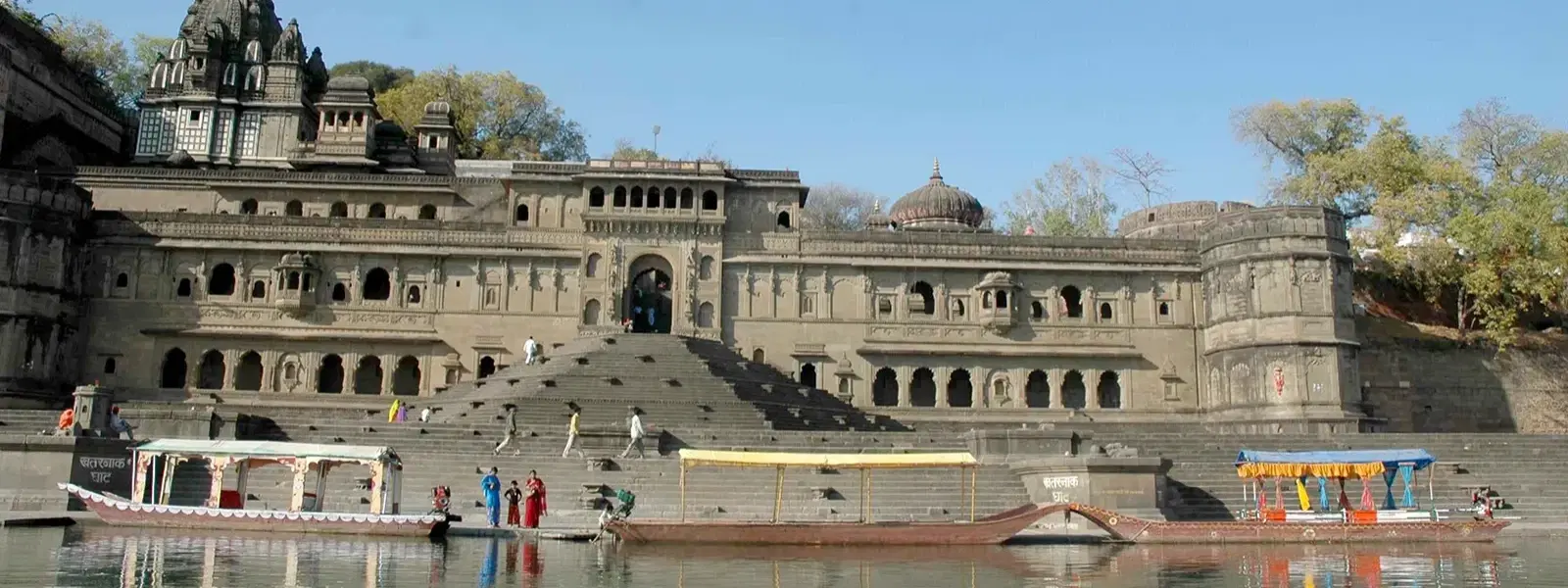
Hotels
•03 min read

Sarkhej Roza, located on the outskirts of Ahmedabad, is a serene architectural marvel that blends history, spirituality, and artistry. This ancient site, celebrated for its Sarkhej Roza Ahmedabad serene architecture, offers a fascinating journey through time. In this post, we answer frequently asked questions about this historic haven, highlighting its blend of Indo-Saracenic, Islamic, Hindu, and Jain designs. Readers will discover the significance of its historical origins, architectural brilliance, and cultural legacy, all of which contribute to its reputation as one of Ahmedabad's most peaceful tourist spots.
Established in the 15th century during the reign of Sultan Ahmed Shah, Sarkhej Roza has stood as a symbol of regional heritage for centuries. Its foundation was not only a political statement but also a spiritual one, with Sufi saint Sheikh Ahmed Khattu Ganj Baksh playing a pivotal role in bestowing the site with a deep sense of divine significance. This early phase laid the groundwork for what would evolve into a serene heritage monument and a source of inspiration for visitors from across India.
The complex saw further development and was completed in 1451 under the supervision of Sultan Mahmud Begada. Over time, the Sarkhej Roza complex incorporated diverse architectural elements, including influences from Persian artistry as well as Hindu and Jain craftsmanship. This fusion of styles transformed the site into an architectural marvel that not only exemplifies Ahmedabad Islamic architecture but also takes on the character of a true ancient architectural marvel.
Sarkhej Roza is a brilliant representation of Indo-Saracenic design. Here, Islamic motifs intertwine seamlessly with Hindu and Jain traditions. The intricate carvings, gracefully arched domes, and finely crafted minarets contribute to a sophisticated urban fabric that resonates with history. The site’s design is a testament to the rich cultural exchanges of the Mughal era, making it a standout example of Ahmedabad Islamic architecture.
The comprehensive layout of Sarkhej Roza includes a mosque, a series of ornate tombs, and a beautiful lake that reflects the grandeur of the structure. The expansive courtyards and water bodies create an aura of calm, emphasizing the site's status as a peaceful tourist spot in Ahmedabad. Visitors are often drawn to these serene details, which invite moments of reflection and appreciation for the architectural beauty of Sarkhej.

Insight Corner: Did You Know? Sarkhej Roza is often referred to as 'Ahmedabad's Acropolis' due to its grandeur and resemblance to ancient Greek architectural sites.
Sarkhej Roza is more than just an architectural masterpiece; it is a living center for Sufi culture in Ahmedabad. The complex has historically served as a hub for spiritual gatherings and Sufi teachings that promoted peace and inclusivity among various communities. This enduring legacy of Sufi culture in Ahmedabad continues to inspire both locals and travelers, who find solace in the gentle ambiance that pervades the monument.
The tranquil environment of Sarkhej Roza has made it a favored destination for those in search of peaceful reflection. Whether you are a history buff, architectural enthusiast, or spiritual seeker, the site offers a unique retreat where ancient artistry meets serene modernity. The site remains a significant landmark linking India’s rich past with its present cultural tapestry.
Guided tours and heritage walks at Sarkhej Roza provide visitors an in-depth exploration of its historical and architectural facets. These walks highlight key points of interest such as the intricately designed minarets, memorial tombs, and the serene Sarkhej lake itself. The routes are carefully laid out to enrich your understanding of the site's layered past and the diverse cultural influences that shaped its construction.
Visitors planning a visit to this serene heritage monument are advised to check the official visiting hours and ticket prices beforehand to enhance the experience. Accessibility is well-maintained across the complex, making it a welcoming space for families, tourists, and professionals alike. Photography is generally allowed at Sarkhej Roza; however, it is important to be respectful of the site's sanctity and adhere to any specific guidelines provided. Taking care of these small details ensures that everyone can enjoy the spectacle of this Mughal-era structure in peace.

Sarkhej Roza features Indo-Saracenic architecture, blending Islamic, Hindu, and Jain design elements into a harmonious structure.
Sarkhej is renowned for its serene atmosphere, Sufi heritage, and stunning architectural beauty, making it a peaceful tourist spot in Ahmedabad.
Yes, photography is generally allowed, but visitors are advised to respect the sanctity of the site and follow any specific guidelines provided.
The construction of Sarkhej Roza was completed under the reign of Sultan Mahmud Begada in 1451.
Sarkhej Roza stands as a timeless symbol of Ahmedabad's rich cultural and architectural heritage. Its riveting history, stunning design elements, and peaceful ambiance create an experience that is both visually captivating and spiritually uplifting. From its origins steeped in Sufi traditions to its status today as a serene heritage monument, the site captures the essence of Ahmedabad’s artistic legacy. As you uncover the layers of its story, the epitome of Sarkhej Roza Ahmedabad serene architecture becomes a vivid narrative of a city that cherishes its heritage with pride and passion.